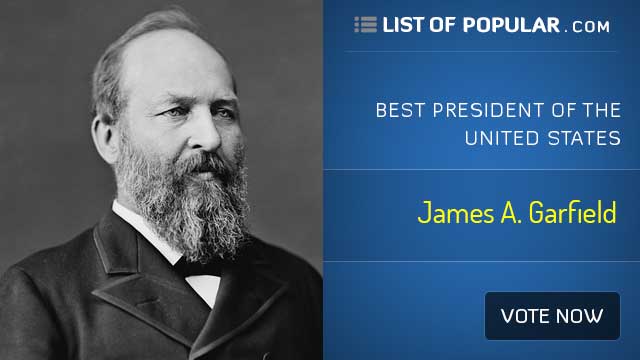The Best US President - James A. Garfield
Early Life and Education
James A. Garfield, the 20th President of the United States, was born on November 19, 1831, in Orange Township, Ohio. Raised in humble beginnings, Garfield worked on a farm and displayed an early aptitude for learning. He later attended the Western Reserve Eclectic Institute (now Hiram College) and distinguished himself as a talented student.
Military Service and Political Beginnings
Garfield's life took a pivotal turn with the outbreak of the Civil War. He joined the Union Army, rising through the ranks to become a major general. After the war, he entered the world of politics, serving as a member of the U.S. House of Representatives. Garfield's oratory skills and commitment to civil rights earned him a prominent place in the Republican Party.
The 1880 Presidential Election
In 1880, Garfield found himself as the Republican nominee for the presidency. His opponent was Winfield Scott Hancock, the Democratic candidate. The election was closely contested, but Garfield emerged victorious, securing the presidency against the backdrop of a nation grappling with the aftermath of Reconstruction and economic challenges.
Assassination and Tragic Death
Garfield's presidency was tragically cut short by an assassin's bullet. On July 2, 1881, while at a train station in Washington, D.C., Garfield was shot by Charles J. Guiteau, a disgruntled office-seeker. Despite receiving medical attention, Garfield's condition worsened due to infections from unsanitary medical practices of the time.
Garfield's prolonged suffering captured the nation's attention, and he ultimately succumbed to his injuries on September 19, 1881. His death marked a turning point in public awareness of medical hygiene and contributed to reforms in medical practices.
Legacy and Achievements
Although his time in office was brief, Garfield made notable contributions. His support for civil service reform and commitment to education stood out. Garfield advocated for a merit-based system for civil service appointments, aiming to reduce the impact of political patronage.
As a strong advocate for education, Garfield's legacy includes his role in expanding educational opportunities. He believed in the transformative power of education and saw it as a means to uplift individuals and society as a whole. The establishment of land-grant colleges during his presidency reflects this commitment.
Conclusion
James A. Garfield's life and presidency were marked by a commitment to service, both on the battlefield and in the political arena. His tragic assassination and the circumstances surrounding his death left a lasting impact on the nation. Despite the brevity of his presidency, Garfield's legacy endures through his contributions to civil service reform and his unwavering belief in the power of education to shape a better future for America.
Garfield's untimely death and the subsequent reforms in medical practices prompted reflection on issues of governance, public service, and the need for advancements in healthcare. James A. Garfield's story remains a compelling chapter in American history, illustrating the complexities of leadership and the enduring quest for progress.

